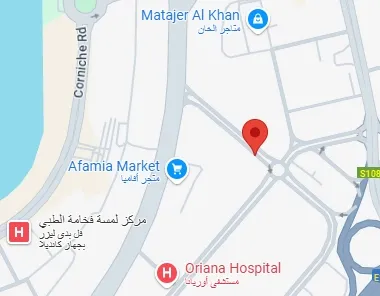As the UAE continues its rapid digital transformation, businesses—especially e-commerce platforms, service providers, and tech startups—must adapt to evolving customer expectations. One of the most critical elements of a successful digital presence is seamless, secure, and localized online payment processing. This is where integrating local payment gateways into UAE websites becomes a game-changer.
In this article, we’ll explore why local payment integration is vital, how it affects user experience and trust, and the best practices for successfully incorporating these systems into your digital infrastructure.
Why Integrating Local Payment Gateways into UAE Websites Is Crucial
UAE consumers are digitally savvy and expect convenience, especially when it comes to online transactions. Whether it’s shopping, booking appointments, or subscribing to digital services, users prefer localized solutions that align with their preferences, currencies, and banking systems.
Integrating local payment gateways into UAE websites offers several strategic benefits:
1. Enhanced Customer Trust
Consumers are far more likely to complete a purchase when they recognize and trust the payment gateway. Names like Telr, PayTabs, Network International, and Checkout.com resonate with UAE customers.
2. Faster Settlement and Reduced Currency Conversion Costs
Local payment providers operate within the country’s financial ecosystem. This minimizes transaction fees, avoids exchange rate fluctuations, and speeds up fund transfers to local bank accounts.
3. Compliance with UAE Financial Regulations
Operating a business in the UAE requires adherence to Central Bank regulations and local financial laws. Integrating local payment gateways into UAE websites helps ensure your platform is fully compliant, reducing legal risks.

Popular Local Payment Gateways in the UAE
When integrating local payment gateways into UAE websites, it’s essential to choose a provider that aligns with your business model and target audience. Here are some widely used options:
Network International: One of the oldest and most trusted payment service providers in the region. Offers extensive support for cards, digital wallets, and recurring payments.
PayTabs: A fast-growing regional player known for its easy API integration and support for both SMEs and large enterprises.
Telr: Based in Dubai, Telr provides multi-currency support, anti-fraud tools, and seamless integration with platforms like Shopify, WooCommerce, and Magento.
Checkout.com: Though a global provider, Checkout.com has a strong presence in the UAE and supports local currency, payment methods, and bank settlements.
Mamo Pay: A newer entrant offering simple peer-to-peer and business transactions, particularly popular among small businesses and freelancers.
Choosing the right gateway depends on your needs—whether it’s B2C e-commerce, B2B transactions, subscriptions, or donations.
SEO Advantage: How Local Payment Integration Enhances Trust Signals
From a search engine optimization (SEO) perspective, integrating local payment gateways into UAE websites can also contribute indirectly to better rankings. Here’s how:
Lower Bounce Rates: If users see familiar payment methods, they are more likely to trust the site and complete the transaction, improving dwell time and reducing bounce rates—important SEO signals.
Localized Content: Adding information about your UAE-supported payment options on landing pages or FAQs creates region-specific relevance. Google loves geo-targeted content.
Mobile Optimization: Many local payment gateways come with mobile-friendly payment flows, which enhance usability and align with Google’s mobile-first indexing.
Customer Experience: Speed and Simplicity Matter
The UAE’s online shoppers expect fast and frictionless transactions. Long checkout processes, redirection to third-party gateways, or lack of local currency can quickly turn a potential sale into an abandoned cart.
Integrating local payment gateways into UAE websites ensures that:
Users can pay in AED (Dirhams) without confusion or added conversion charges.
Payments are processed within seconds, improving customer satisfaction.
Support is available in Arabic and English, catering to the diverse population.
Better payment experiences directly translate into higher conversion rates and repeat customers—especially in industries like fashion, electronics, F&B, and digital services.
Technical Aspects of Integration
When it comes to integrating local payment gateways into UAE websites, the process usually involves:
1. API Integration
Most providers offer well-documented APIs or SDKs that your developer can integrate into your platform. It’s important to ensure SSL security, tokenization, and PCI DSS compliance.
2. Plugin Support
Many gateways offer ready-to-use plugins for CMS platforms like WordPress, Magento, Shopify, and OpenCart. These plugins speed up deployment and minimize coding requirements.
3. Testing and Sandbox Environment
Before going live, it’s essential to test transactions using the sandbox mode. This ensures all payment processes, error messages, and confirmations work correctly.4. Mobile Compatibility
Ensure that the payment gateway is optimized for mobile devices. UAE users often complete purchases on their phones, especially during sales or flash promotions.

Challenges to Consider
Although integrating local payment gateways into UAE websites brings many benefits, it’s not without challenges:
Approval Process: Some providers require rigorous onboarding, including submitting your business license, bank details, and website verification.
Transaction Fees: Compare fee structures, including per-transaction charges, monthly fees, and chargeback rates.
Technical Support: Look for providers that offer 24/7 support, ideally in both Arabic and English.
A poorly implemented payment gateway can harm user experience and business operations, so due diligence is key.
Real-World Use Cases in the UAE
Let’s look at how integrating local payment gateways into UAE websites has helped real businesses:
Kibsons: A popular online grocery store in the UAE, Kibsons uses trusted local gateways to provide smooth mobile checkout experiences, helping build customer loyalty.
The Giving Movement: This sustainable fashion brand leverages local and international payment options, including installment-based payments, making it easier for users to pay in AED.
Namshi: A leading fashion e-commerce site that supports multiple local payment methods and even cash on delivery—still widely preferred in some parts of the UAE.
These examples show that the right payment integration can support scaling, improve trust, and enhance customer loyalty.
Best Practices for Integration
To maximize the impact of integrating local payment gateways into UAE websites, follow these best practices:
Display Payment Options Clearly
Show available payment methods on the homepage, product pages, and during checkout.
Offer Multiple Payment Methods
Include options like credit/debit cards, Apple Pay, Tabby, Tamara, and even cash on delivery if needed.
Keep the Checkout Process Simple
The fewer the steps, the better. Minimize page redirection and allow guest checkout if possible.
Ensure Mobile Responsiveness
UAE users are mobile-first. Your payment gateway must offer a flawless mobile experience.
Regularly Test Payment Flows
Test from different devices, locations, and browsers to ensure compatibility and responsiveness.
Final Thoughts
In today’s competitive digital market, integrating local payment gateways into UAE websites is no longer optional—it’s essential. From building user trust and boosting conversions to ensuring regulatory compliance and enhancing SEO, local payment solutions provide tangible advantages for businesses of all sizes.
If your goal is to grow your online presence in the UAE, streamline transactions, and meet customer expectations, now is the time to prioritize payment gateway integration.
Whether you’re launching a new e-commerce store or upgrading an existing platform, remember: integrating local payment gateways into UAE websites is one of the smartest investments you can make for your digital success.



